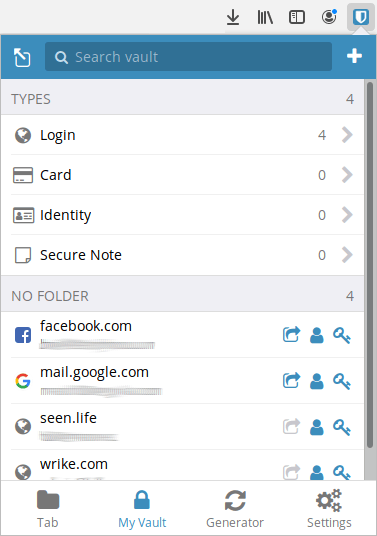
You can also create folders and add items to them.

These passwords can be tailored to conform with any specific requirements a website insists on. This works much like our very own data breach tool and compares the username and password you enter with a database of known password breaches.Ī more secure option than thinking up your own all-too-fallible passwords is to let the Bitwarden app generate secure passwords for you. using browser add-ons.Īn interesting new feature is a button in the password field which checks if the password you input has been exposed. Four “Types” of data entry are supported: login, card, identity, and secure note.Įach entry Type is formatted in a way suitable to entering data of that kind, and which the app can use to auto-fill passwords, web forms, and card detail forms. We find the interface to be smart looking and very easy to use.

It is also available through the Ubuntu Software Center and, of course, you can compile the open-source code yourself. Most versions of Linux are supported thanks to the app being packaged in the AppImage format. The Bitwarden desktop clients are basically identical in Windows, macOS, and Linux. You’ll need to think of a strong master password, and can choose a hint to help you remember it.Īnd that’s it! Just don’t forget your master password! The desktop clients A password is requested, but this is not verified. To start using Bitwarden, just download the app for your platform and sign-up in-app. What is important to note is that there is no account recovery feature. Command-line tools (CLI) to write and execute scripts on your Bitwarden vault.



 0 kommentar(er)
0 kommentar(er)
